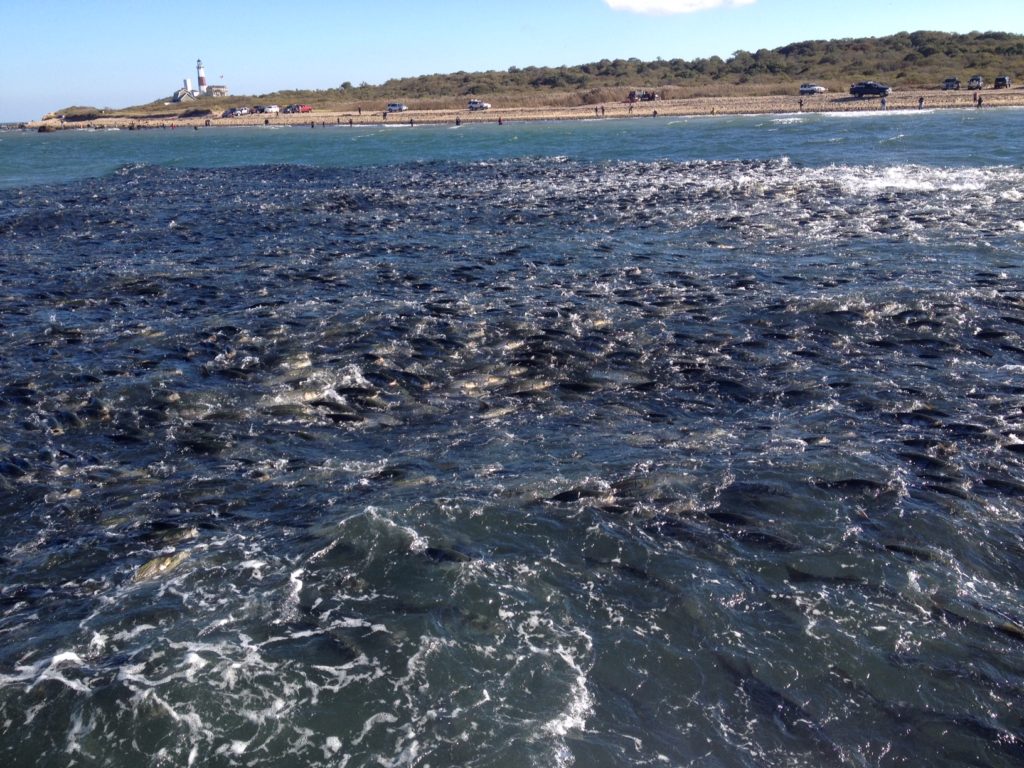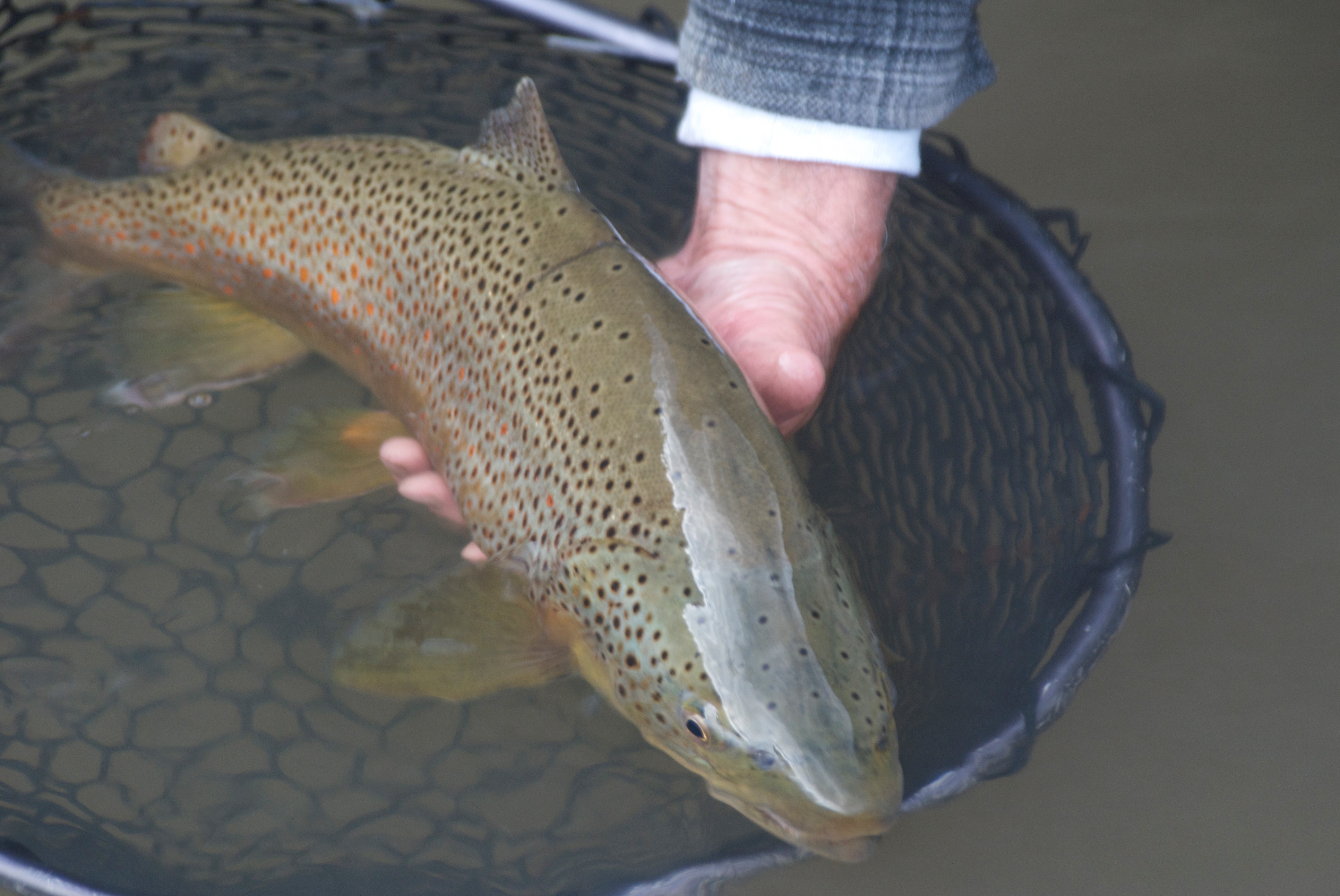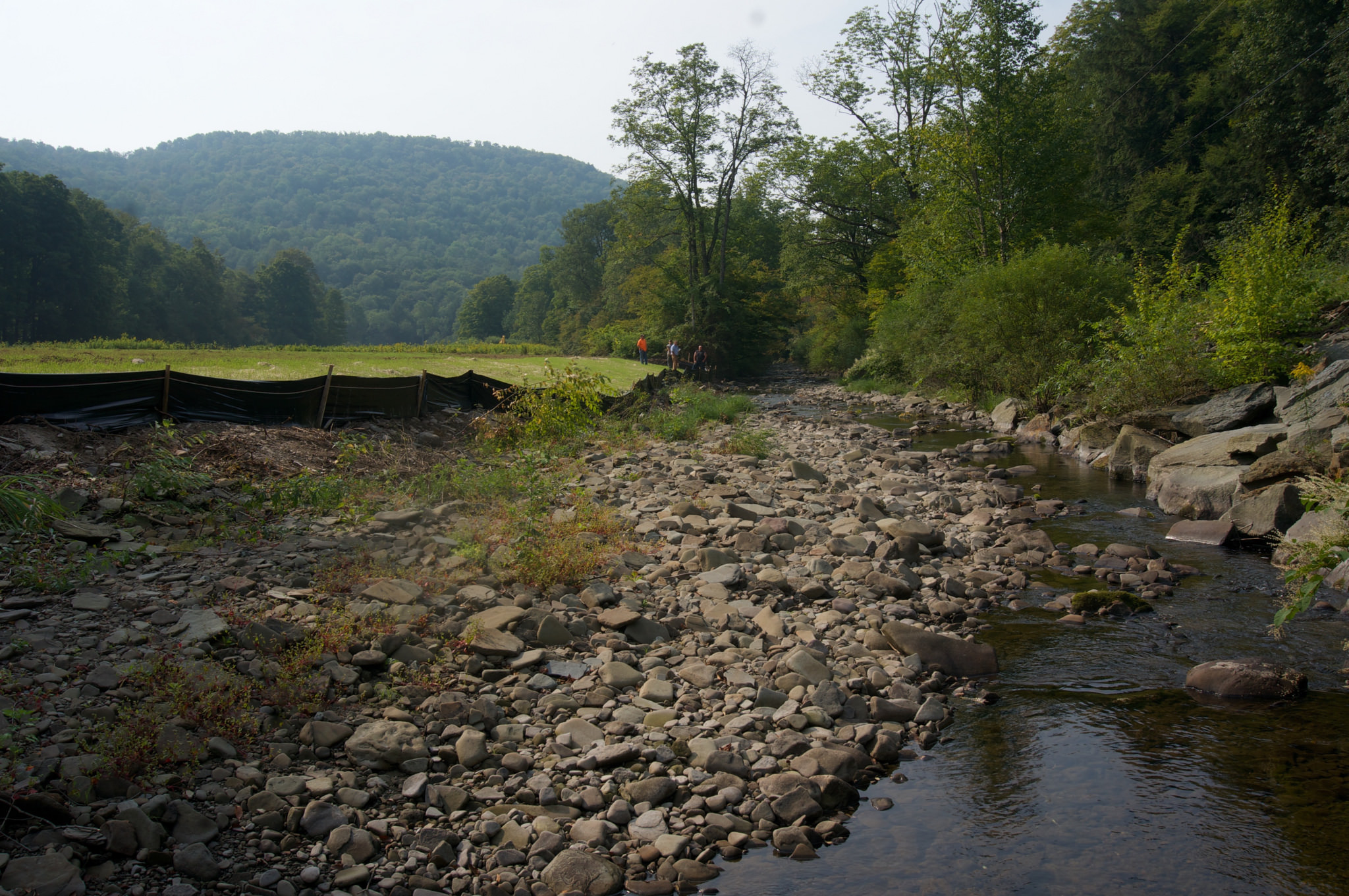The Atlantic menhaden sustains East Coast angling and coastal economies—but these forage fish are at a turning point
Anglers up and down the Atlantic coast know that a shortcut to finding gamefish is to follow the birds. When birds are working on the horizon, dive-bombing schools of menhaden—the meal that’s also critical to many popular gamefish—you can’t get out of the no-wake zone fast enough. It is going to be a good day of fishing.
Atlantic menhaden, also known as pogey or bunker, are high-protein forage fish that striped bass, tuna, mackerel, sharks, drum, cobia, and tarpon from Maine to Florida depend on for food. You name it, if you are casting a line to it, it’s most likely feeding on menhaden.
Menhaden also help filter water and improve marine habitats. By feeding on algae-causing plankton, an adult menhaden can filter 2.4 gallons of water per minute. Their importance to the ecosystem is clear. Remove them, and the system breaks down.
Simply put, there is no fish that means more to the East Coast than Atlantic menhaden, and their future is being determined right now.
Beyond Bait

Menhaden are also the most heavily commercially fished species in the nation, though you will never see it on a menu or in a fish market. Billions are ground up and used in products such as fertilizer, pet food, and cosmetics. More individual menhaden are caught each year than any other fish species, and they are second only to Alaskan pollock when measured by pounds harvested.
That commercial harvest could be costing sportfish a valuable food source.
Unfortunately for the “most important fish in the sea,” current management of menhaden stocks does not account for their critical role in the marine food chain. As a result, menhaden are managed in a way that puts gamefish populations, and our recreational fishing opportunities, at risk.
However, anglers now have a brief window to speak up for improvements to the immediate and future management of menhaden, which would benefit sportfishing, water quality, and coastal communities.
A Call to Action for Anglers

In November 2017, the Atlantic States Marine Fishing Commission, decided on proposed changes to the Interstate Fishery Management Plan for menhaden. Now, the commission must implement improvements.
One of the most critical issues for anglers is the development of menhaden-specific management metrics that account for the ecosystem-wide benefits they provide, including their critical role as forage fish. But we must also urge the commission to immediately move management of menhaden to a conservative harvest, while giving ASFMC experts time to develop these menhaden-specific metrics.
Our future days on the water—not to mention the $27 billion in economic activity that recreational anglers generate depends on sportsmen and women taking a big stand for this little fish. Stay tuned for how you can support bringing forage fish management into the 21st century and ensure that future generations will have an opportunity to scan the horizon for the frenzied swoop of birds and the roiling waters of a striper blitz.
Photo credit for cover photo and first photo: Paul Dixon








I agree with the action above.
Keep New York fresh and clear!
I support the menhaden management plan for the east coast fishery. I am not an east coast fisherman but I have seen what can happen to a fishery when a forage fish population becomes depopulated. In the great lakes our sport fish, particularly king salmon depend on ailwives for their food source. When the ailwives suffered wit the inrusion of zebra mussels in the greatlakes the detrimental effect on our salmon was almost immediate. Our sport fishing industry, a significant economic contributor, has suffered accordingly. Don’t let the same thing happen along the east coast.
This is a critical issue that needs to be addressed. Our nations fishery’s are a stake!
I have been fishing in the Gulf of Mexico for 70 years and have seen many changes. I am a retired Pharmacist and have had a master captains license, and have been a tournament director of one of the oldest tournaments on the Gulf coast. I applied to be on the ad hoc advisory committee for the management of red snapper and was turned down saying that I didn’t qualify. Our fish in the Gulf are starving to death and eating each other. Porpoises are stealing trout off our lines in Grand Isle and stealing red snapper off long lines way offshore. No farmer, with any crop, would try to raise their crop and not feed it. Menhayden are over fished and will be extinct if not regulated.
Each large red snapper lays over one million eggs each spawn and they spawn several times a year. We need to do whatever steps are necessary to promote the raising of all of our baby fish and there would be plenty for everyone!!!